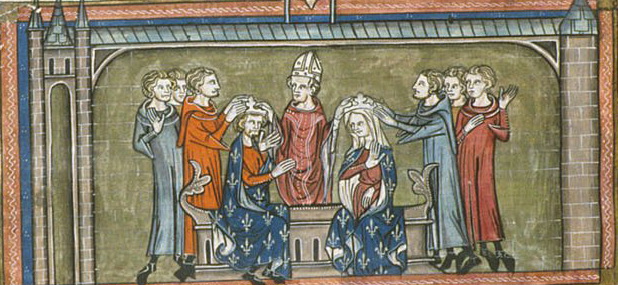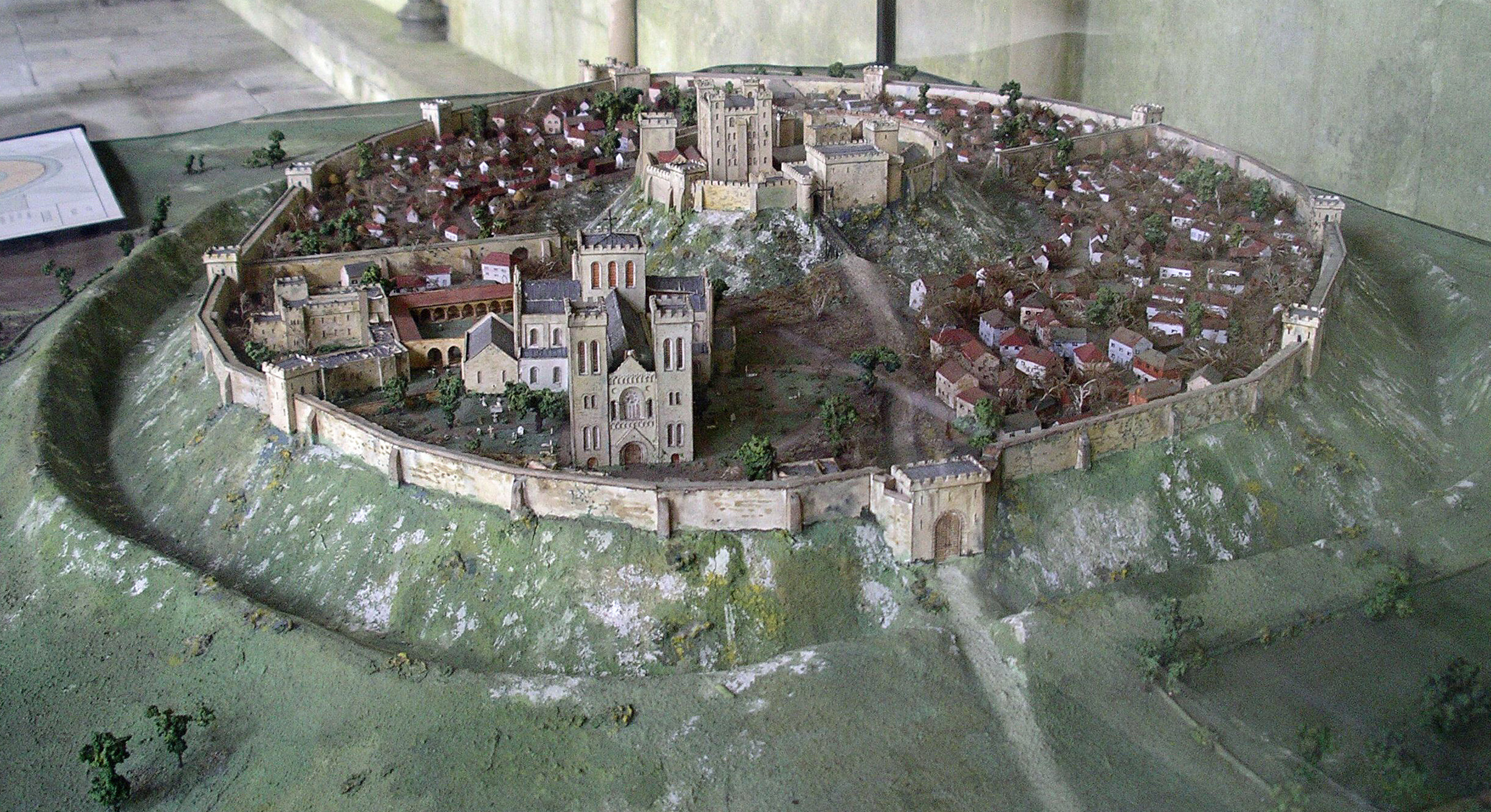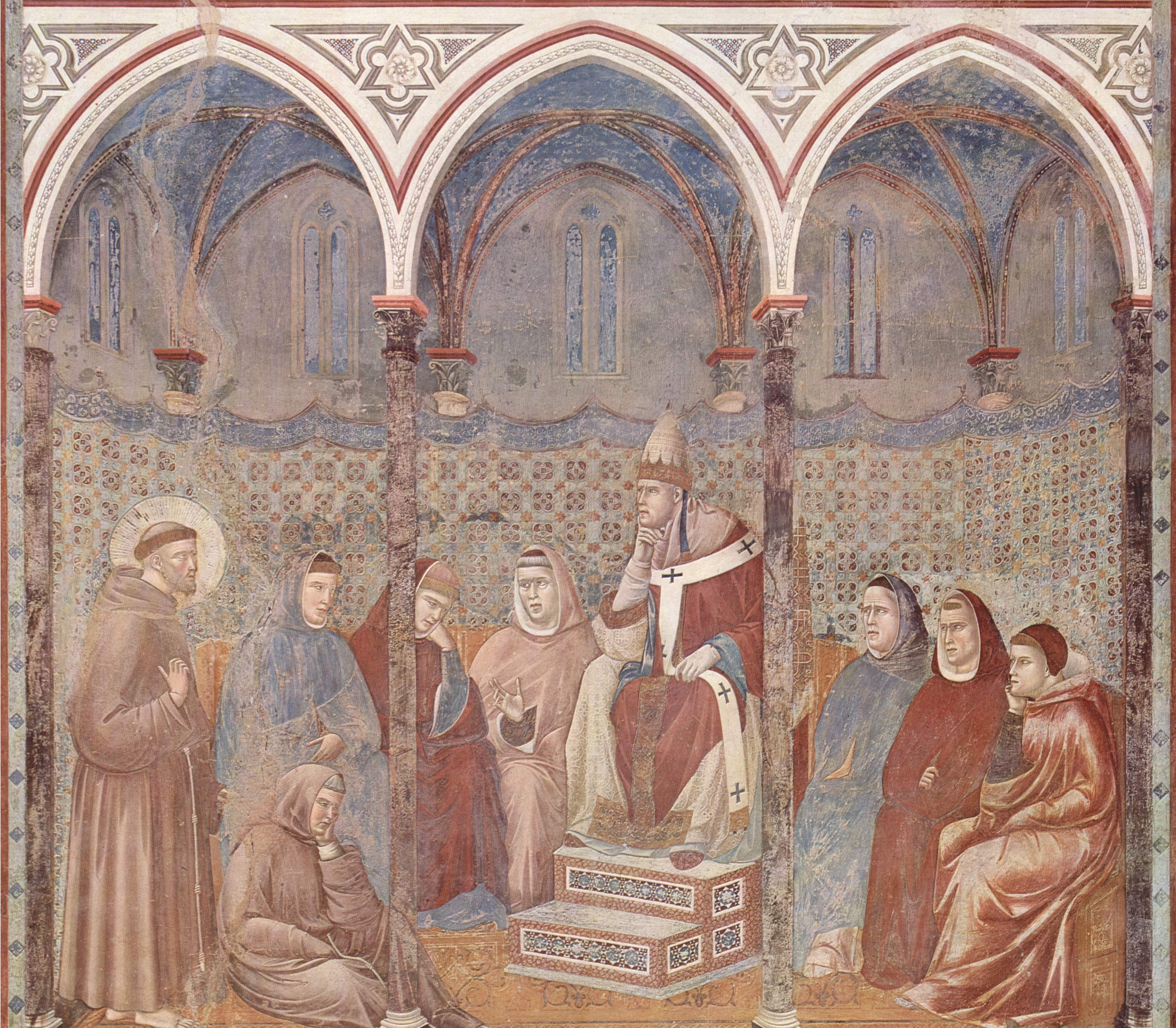|
Guala Bicchieri
Guala Bicchieri ( 1150 – 1227) was an Italian diplomat, papal official and Cardinal (Catholic Church), cardinal. He was the papal legate in England from 1216 to 1218 and took a prominent role in the politics of England during John, King of England, King John's last years and Henry III of England, Henry III's early minority. Career Guala Bicchieri was from a prominent family in Vercelli, in northern Italy, in what is now the Italian region of Piedmont; his father, Manfredo de Bicheriis, was a consul of the city. He was trained for the law but entered the clergy; he was first mentioned in 1187 as a canon in the cathedral of Vercelli. By 1205 he had become a cardinal and had served as a papal legate in northern Italy before being appointed legate to France in 1208. Papal legate to England Pope Innocent III named him legate to England in January 1216. His mission was to make peace between the English and the French; the civil war and the threatened invasion by the French—in supp ... [...More Info...] [...Related Items...] OR: [Wikipedia] [Google] [Baidu] |
Roman Catholic Church
The Catholic Church (), also known as the Roman Catholic Church, is the List of Christian denominations by number of members, largest Christian church, with 1.27 to 1.41 billion baptized Catholics Catholic Church by country, worldwide as of 2025. It is among the world's oldest and largest international institutions and has played a prominent role in the history and development of Western civilization.Gerald O'Collins, O'Collins, p. v (preface). The church consists of 24 Catholic particular churches and liturgical rites#Churches, ''sui iuris'' (autonomous) churches, including the Latin Church and 23 Eastern Catholic Churches, which comprise almost 3,500 dioceses and Eparchy, eparchies List of Catholic dioceses (structured view), around the world, each overseen by one or more Bishops in the Catholic Church, bishops. The pope, who is the bishop of Rome, is the Papal supremacy, chief pastor of the church. The core beliefs of Catholicism are found in the Nicene Creed. The ... [...More Info...] [...Related Items...] OR: [Wikipedia] [Google] [Baidu] |
Louis VIII Of France
Louis VIII (5 September 1187 8 November 1226), nicknamed The Lion (), was King of France from 1223 to 1226. As a prince, he invaded Kingdom of England, England on 21 May 1216 and was Excommunication in the Catholic Church, excommunicated by a papal legate on 29 May 1216. On 2 June 1216, Louis was proclaimed "King of England" by rebellious barons in London, though never crowned. With the assistance of allies in England and Scotland he gained control of approximately one third of the English kingdom and part of Southern Wales. He was eventually defeated by English loyalists and those barons who swapped sides following the death of King John of England, King John. After the Treaty of Lambeth, he was paid 10,000 mark (currency), marks, pledged never to invade England again, and was absolved of his excommunication. As prince and fulfilling his father's crusading vow, Louis led forces during the Albigensian Crusade in support of Simon de Montfort, 5th Earl of Leicester, Simon de Mo ... [...More Info...] [...Related Items...] OR: [Wikipedia] [Google] [Baidu] |
Chesterton, Cambridge
Chesterton is a suburb in Cambridge, England. As of the 2021 United Kingdom census, 2021 UK census, the suburb had a population of 18,620 people. History Archaeological evidence indicates that the area that is now Chesterton has been inhabited since at least the Bronze Age. In Anglo-Saxon times Chesterton formed part of a larger vill spanning the River Cam. The rest of the vill became the ancient borough, borough of Cambridge sometime after the 8th century, but Chesterton was excluded from the early borough. Chesterton was an ancient parish. The parish included the village and adjoining rural areas generally to the north of it; at the western end of the parish it included Cambridge Castle. Chesterton was governed by its parish vestry and manorial courts in the same way as most rural areas until 1880, when the parish was made a Local board of health#Local Government Act 1858, local government district, governed by an elected local board. Such districts were reconstituted as Urba ... [...More Info...] [...Related Items...] OR: [Wikipedia] [Google] [Baidu] |
St Andrew's Church, Chesterton
St Andrew's Church, Chesterton is a Church of England parish church in Chesterton, Cambridge. It is a Grade I listed building. A church was first recorded on this site around 1200. The church was presented in 1217 to the papal legate, Cardinal Guala, by Henry III of England, in gratitude for the legate's attempt at reconciliation during domestic unrest at the end of the reign of King John. In 1436 Henry VI seized ownership of the church and associated buildings from the Italian Abbey of Vercelli and gave it to King's Hall, Cambridge which later became Trinity College, Cambridge. Trinity College is the church's patron to this day; with many vicars of Chesterton being fellows of Trinity. Built from flint, rubble and clunch with ashlar on the tower and buttresses. The tower has two bell-openings ( decorated) and is topped by a spire lit by small windows. The spire was restored in 1847 and the spare, tower and chancel in 1968. The windows are in the perpendicular style, except the ... [...More Info...] [...Related Items...] OR: [Wikipedia] [Google] [Baidu] |
Basilica Di Sant'Andrea
In Ancient Roman architecture, a basilica (Greek Basiliké) was a large public building with multiple functions that was typically built alongside the town's forum. The basilica was in the Latin West equivalent to a stoa in the Greek East. The building gave its name to the ''basilica'' architectural form. Originally, a basilica was an ancient Roman public building, where courts were held, as well as serving other official and public functions. Basilicas are typically rectangular buildings with a central nave flanked by two or more longitudinal aisles, with the roof at two levels, being higher in the centre over the nave to admit a clerestory and lower over the side-aisles. An apse at one end, or less frequently at both ends or on the side, usually contained the raised tribunal occupied by the Roman magistrates. The basilica was centrally located in every Roman town, usually adjacent to the forum and often opposite a temple in imperial-era forums. Basilicas were also bu ... [...More Info...] [...Related Items...] OR: [Wikipedia] [Google] [Baidu] |
Salisbury Cathedral
Salisbury Cathedral, formally the Cathedral Church of the Blessed Virgin Mary, is an Church of England, Anglican cathedral in the city of Salisbury, England. The cathedral is regarded as one of the leading examples of Early English architecture, Early English Gothic design. Built over a relatively short period, some 38 years between 1220 and 1258, it has a unity and coherence that is unusual in Middle Ages, medieval English cathedrals. The tower and spire were completed by 1330. The cathedral's spire, at , is the tallest in England. The Old Sarum Cathedral, original cathedral in the district was located at Old Sarum, about north of the present city. In 1197 bishop Herbert Poore determined on a relocation but this was not taken forward until the episcopate of his brother, Richard Poore in the early 13th century. Foundation stones for the new building were laid on 28 April 1220 by the William Longespée, 3rd Earl of Salisbury, Earl and Ela of Salisbury, 3rd Countess of Salisbury, C ... [...More Info...] [...Related Items...] OR: [Wikipedia] [Google] [Baidu] |
Old Sarum
Old Sarum, in Wiltshire, South West England, is the ruined and deserted site of the earliest settlement of Salisbury. Situated on a hill about north of modern Salisbury near the A345 road, the settlement appears in some of the earliest records in the country. It is an English Heritage property and is open to the public. The great stone circles of Stonehenge and Avebury were erected nearby and indications of #Prehistory, prehistoric settlement have been discovered from as early as 3000 BC. An British Iron Age, Iron Age British hillforts, hillfort was erected around 400 BC, controlling the intersection of two trade paths and the Hampshire River Avon, Hampshire, Avon. The site continued to be occupied during the #Roman period, Roman period, when the paths were made into Roman roads in Britain, roads. The #Saxon period, Saxons took the Britons (Celtic people), British fort in the 6th century and later used it as a stronghold against Viking invasions of England, maraudin ... [...More Info...] [...Related Items...] OR: [Wikipedia] [Google] [Baidu] |
Old Sarum Cathedral
Old Sarum Cathedral was a Catholic and Norman cathedral at old Salisbury, now known as Old Sarum, between 1092 and 1220. Only its foundations remain, in the north-west quadrant of the circular outer bailey of the site, about north of the centre of modern Salisbury, Wiltshire, in the United Kingdom. The cathedral was the seat of the bishops of Salisbury during the early Norman period and the original source of the Sarum Rite. Description At its largest, the Norman cathedral was from end to end, smaller than most of the cathedrals being constructed at the time. Built in the standard cruciform shape, the building had a nave of seven bays with cross-shaped piers, an apse and a central crossing tower, as well as several peripheral chapels. The cathedral's six altars comprised the high altar in the presbytery; the altars of , , and in three apsidal chapels in the easternmost wall of the church; and the altars of the (the parish altar) and in the nave, set against the western ... [...More Info...] [...Related Items...] OR: [Wikipedia] [Google] [Baidu] |
Chapter (religion)
A chapter ( or ') is one of several bodies of clergy in Catholic, Old Catholic, Anglican, and Nordic Lutheran churches or their gatherings. Name The name derives from the habit of convening monks or canons for the reading of a chapter of the Bible or a heading of the order's rule. The 6th-century St Benedict directed that his monks begin their daily assemblies with such readings, and over time expressions such as "coming together for the chapter" (') found their meaning transferred from the text to the meeting itself and then to the body gathering for it. The place of such meetings similarly became known as the "chapter house" or "room". Cathedral chapter A cathedral chapter is the body ("college") of advisors assisting the bishop of a diocese at the cathedral church. These were a development of the presbyteries ''()'' made up of the priests and other church officials of cathedral cities in the early church. In the Catholic Church, they are now only establi ... [...More Info...] [...Related Items...] OR: [Wikipedia] [Google] [Baidu] |
Dean (Christianity)
A dean, in an ecclesiastical context, is a cleric holding certain positions of authority within a religious hierarchy. The title is used mainly in the Catholic Church, the Anglican Communion, and many Lutheran denominations. A dean's assistant is called a sub-dean. History Latin in the Roman military was the head of a group of ten soldiers within a '' centuria'', and by the 5th century it was the head of a group of ten monks. It came to refer to various civil functionaries in the later Roman Empire.''Oxford English Dictionary'' s.v.' Based on the monastic use, it came to mean the head of a chapter of canons of a collegiate church or cathedral church. Based on that use, deans in universities now fill various administrative positions. Latin ''decanus'' should not be confused with Greek ''diákonos'' (διάκονος), from which the word deacon derives, which describes a supportive role. Officials In the Catholic Church, the Dean of the College of Cardinals and the ... [...More Info...] [...Related Items...] OR: [Wikipedia] [Google] [Baidu] |
Indulgence
In the teaching of the Catholic Church, an indulgence (, from , 'permit') is "a way to reduce the amount of punishment one has to undergo for (forgiven) sins". The ''Catechism of the Catholic Church'' describes an indulgence as "a remission before God of the temporal punishment due to sins whose guilt has already been forgiven, which the faithful Christian who is duly disposed gains under certain prescribed conditions…" The recipient of an indulgence must perform an action to receive it. This is most often the saying (once, or many times) of a specified prayer, but may also include a pilgrimage, the visiting of a particular place (such as a shrine, Church (building), church, or cemetery), or the performance of specific good works. Indulgences were introduced to allow for the remission of the severe penances of the early church and granted at the intercession of Christians awaiting martyrdom or at least imprisoned for the faith.Cross, F. L., ed. ''The Oxford Dictionary of the ... [...More Info...] [...Related Items...] OR: [Wikipedia] [Google] [Baidu] |
Pope Honorius III
Pope Honorius III (c. 1150 – 18 March 1227), born Cencio Savelli, was head of the Catholic Church and ruler of the Papal States from 18 July 1216 to his death. A canon at the Basilica di Santa Maria Maggiore, he came to hold a number of important administrative positions, including that of Camerlengo. In 1197, he became tutor to the young Frederick II. As pope, he worked to promote the Fifth Crusade, which had been planned under his predecessor, Innocent III. Honorius repeatedly exhorted King Andrew II of Hungary and Emperor Frederick II to fulfill their vows to participate. He also gave approval to the recently formed Dominican and Franciscan religious orders. Early work He was born in Rome as a son of Aimerico, a member of the Roman Savelli family. For a time canon at the church of Santa Maria Maggiore, he later became Camerlengo of the Holy Roman Church on December 5, 1189 and Cardinal Deacon of Santa Lucia in Silice on 20 February 1193. Under Pope Clement III and P ... [...More Info...] [...Related Items...] OR: [Wikipedia] [Google] [Baidu] |







